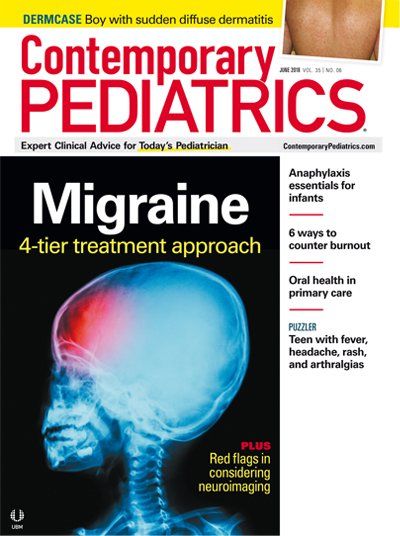Pediatric migraine: Diagnostic criteria and treatment
Physicians must understand current diagnostic criteria for pediatric migraine and its variants, and exercise their best clinical judgment regarding treatment.
Table 1
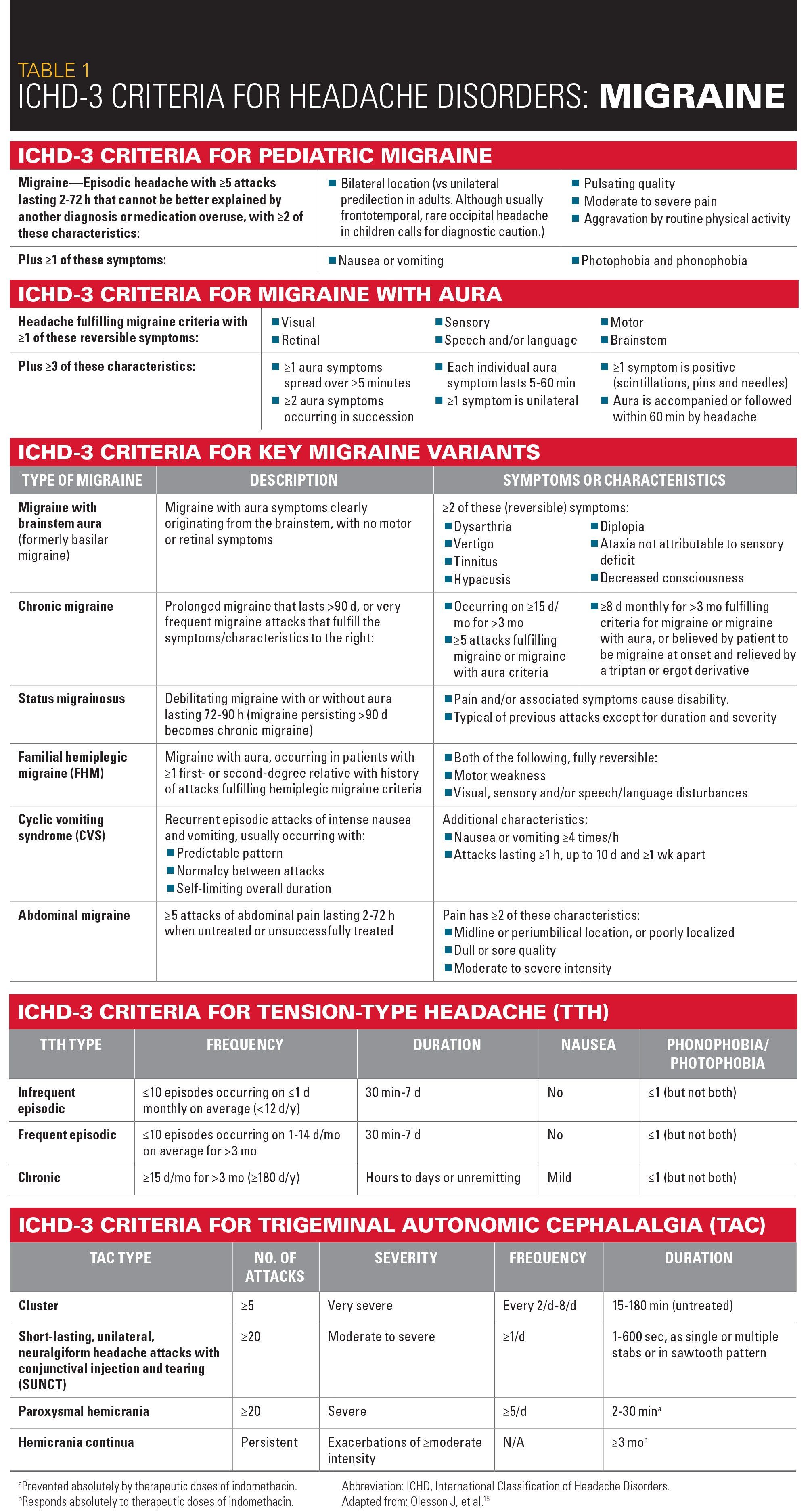
Table 2
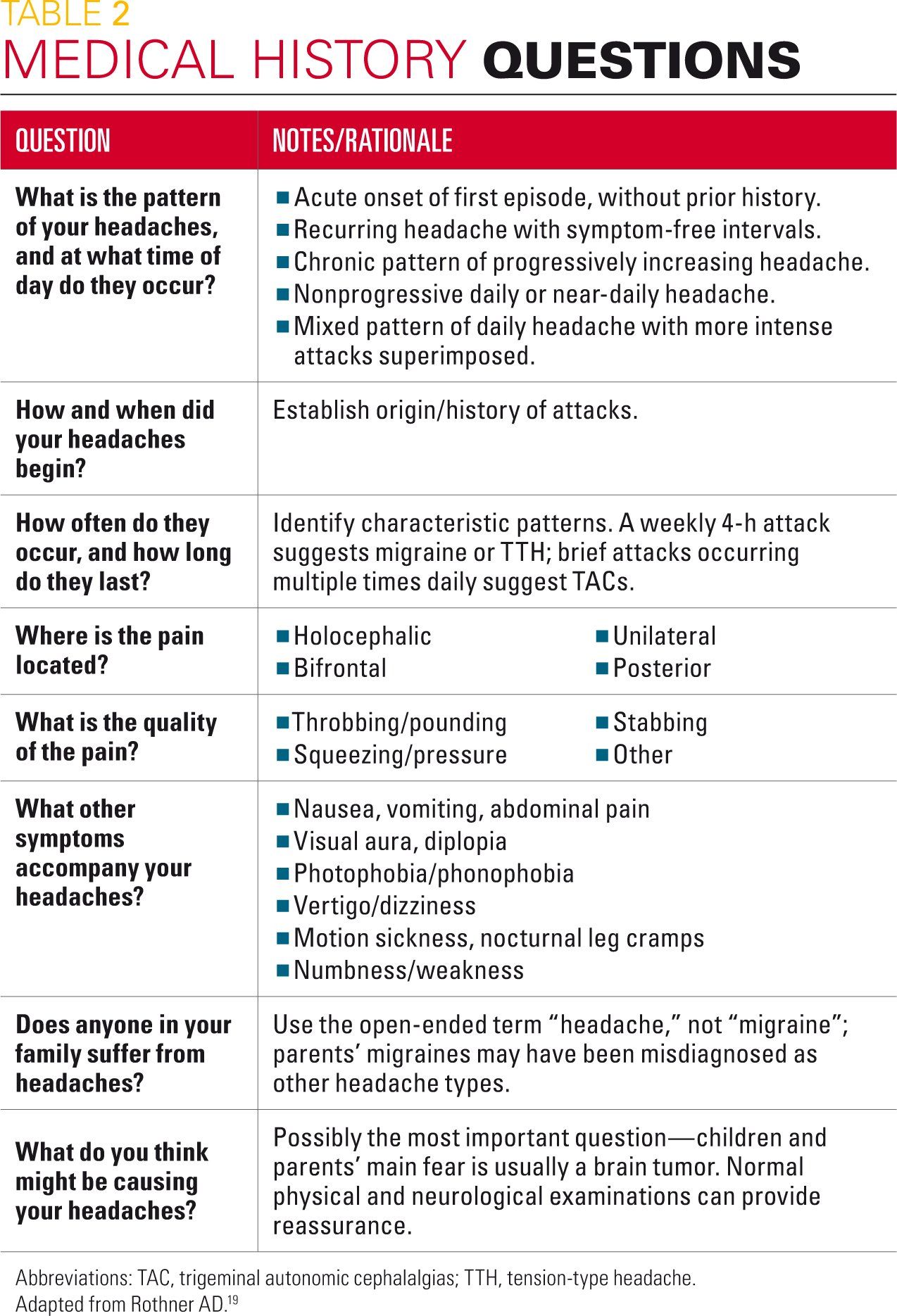
Table 3
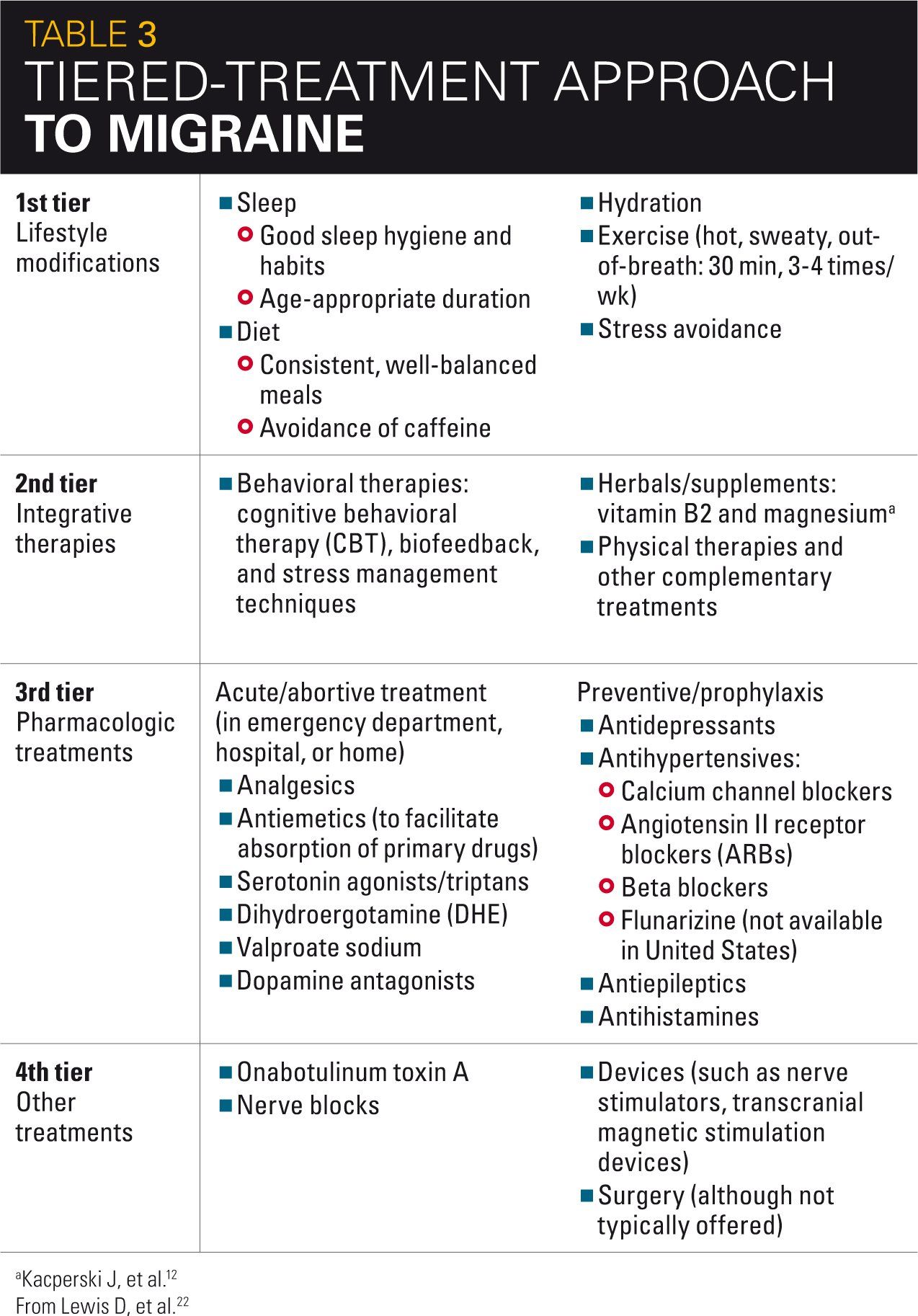
12 red flags

Table 4
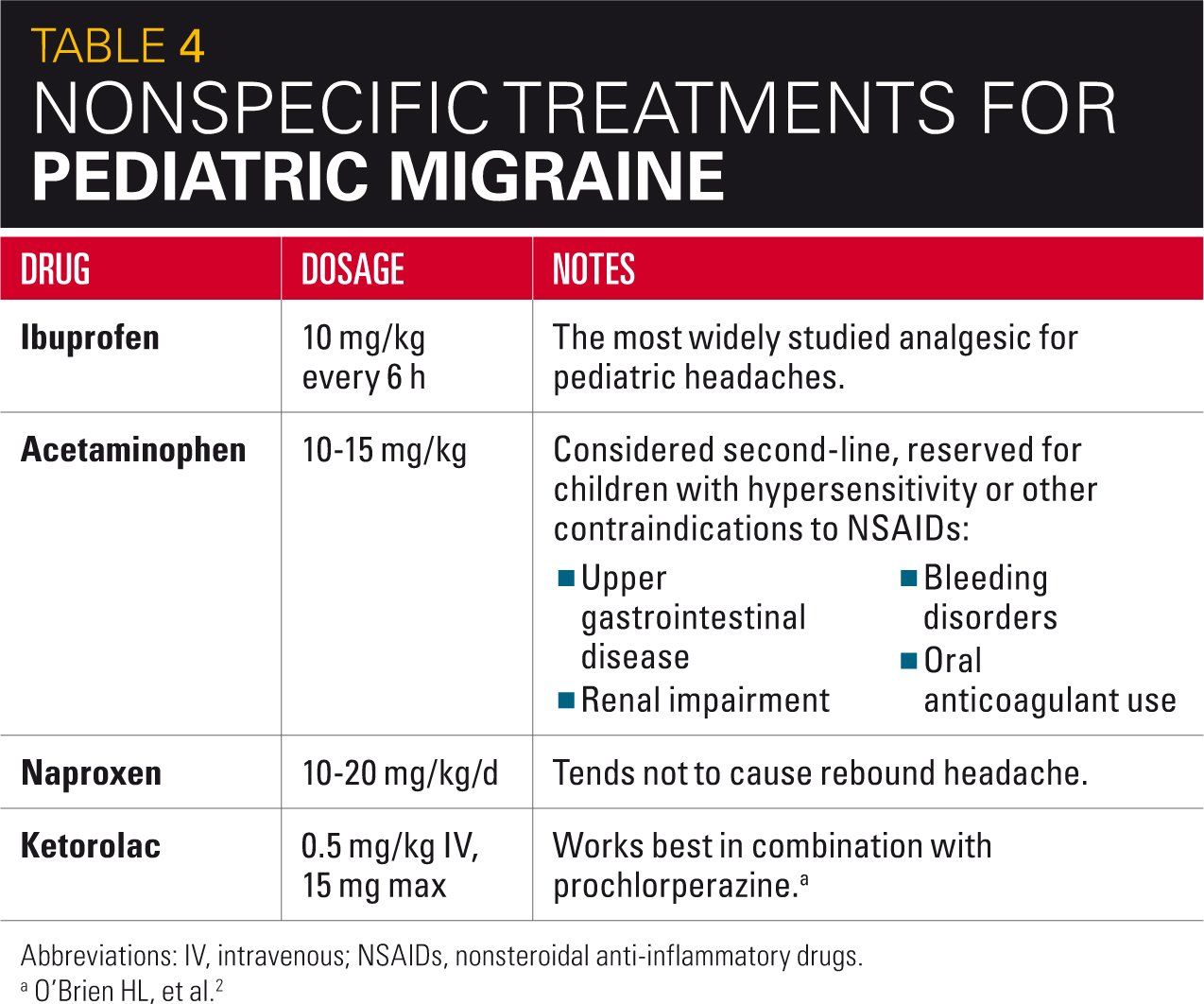
Table 5
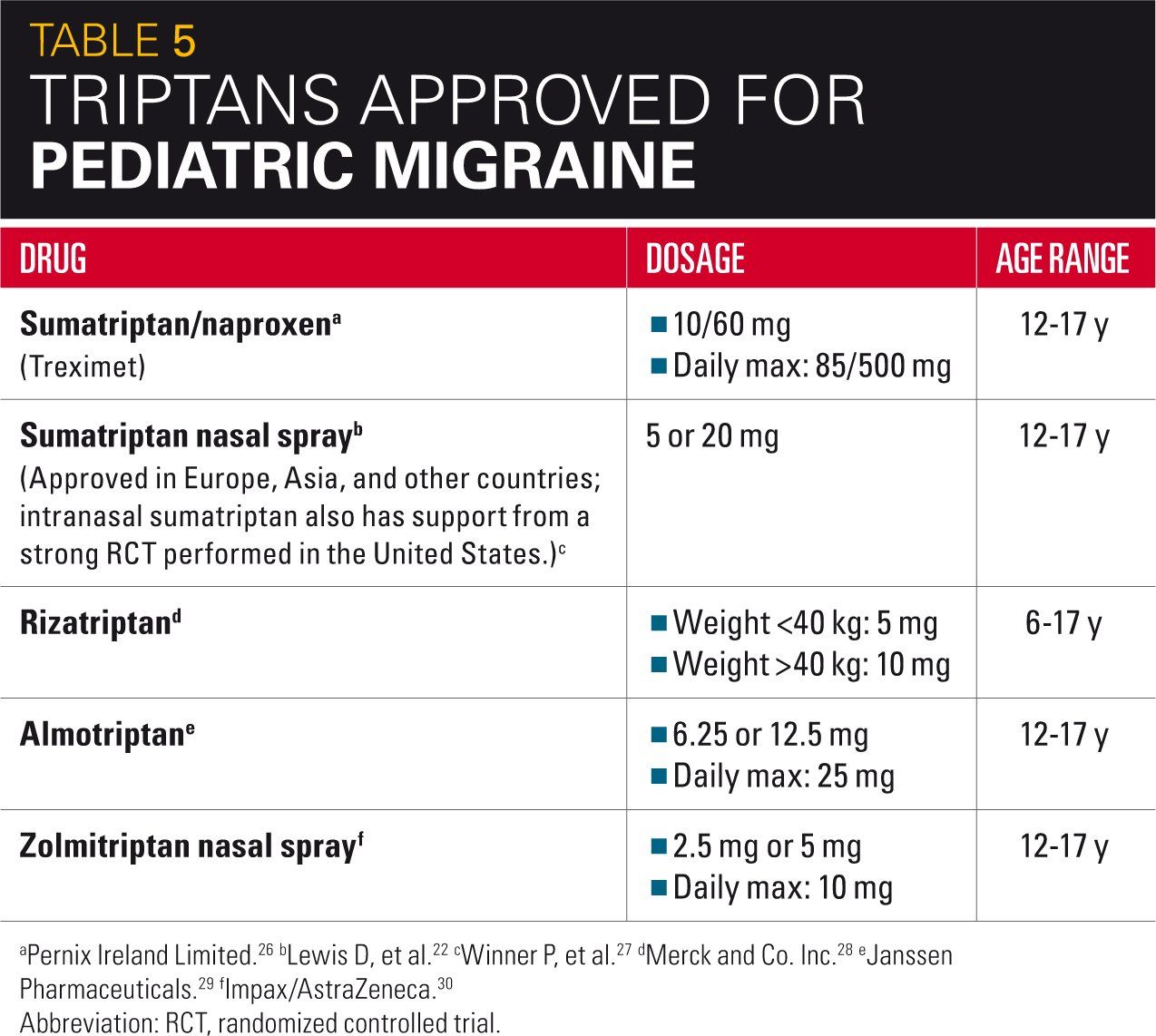
Figure
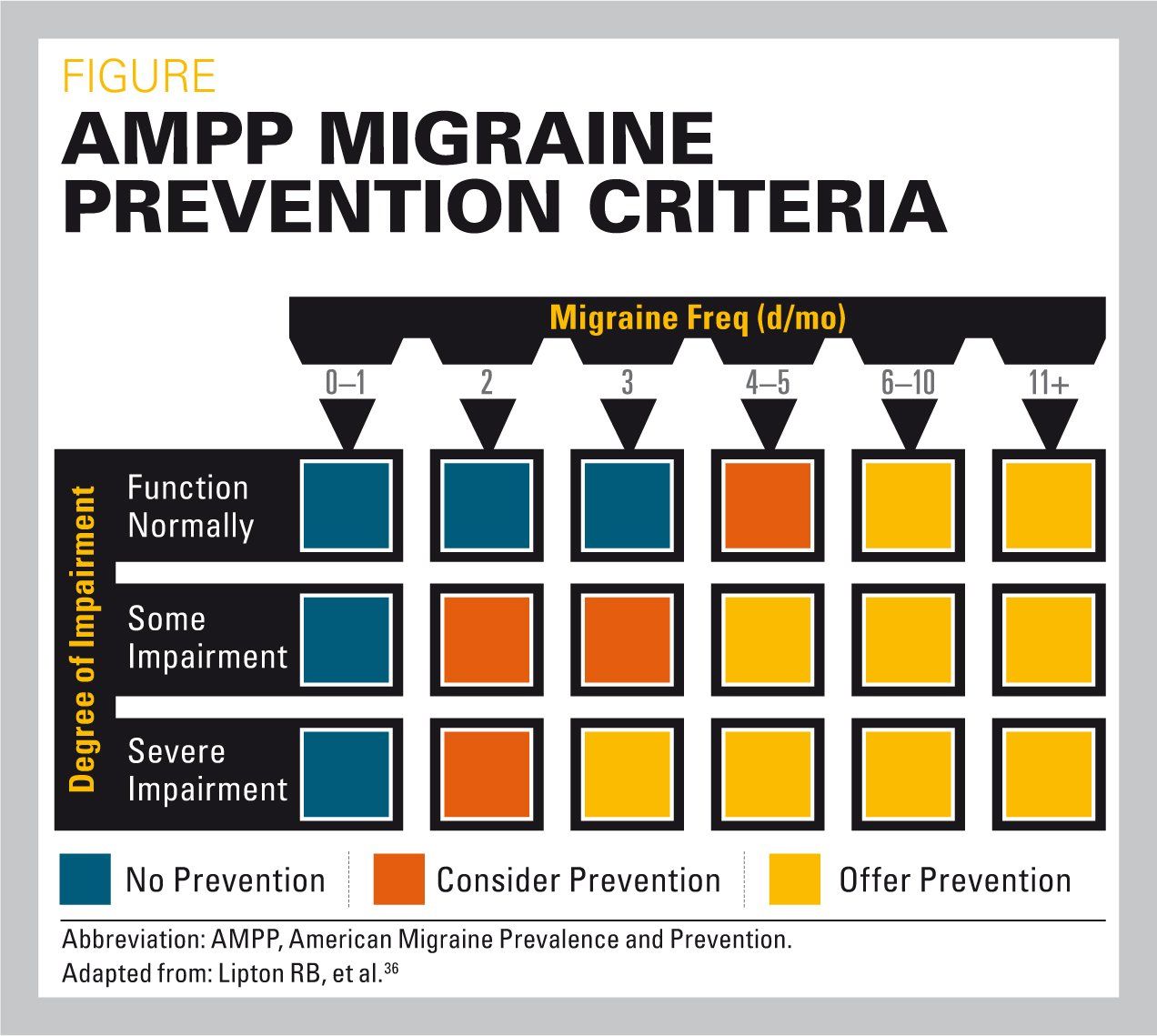
Table 6

Table 7
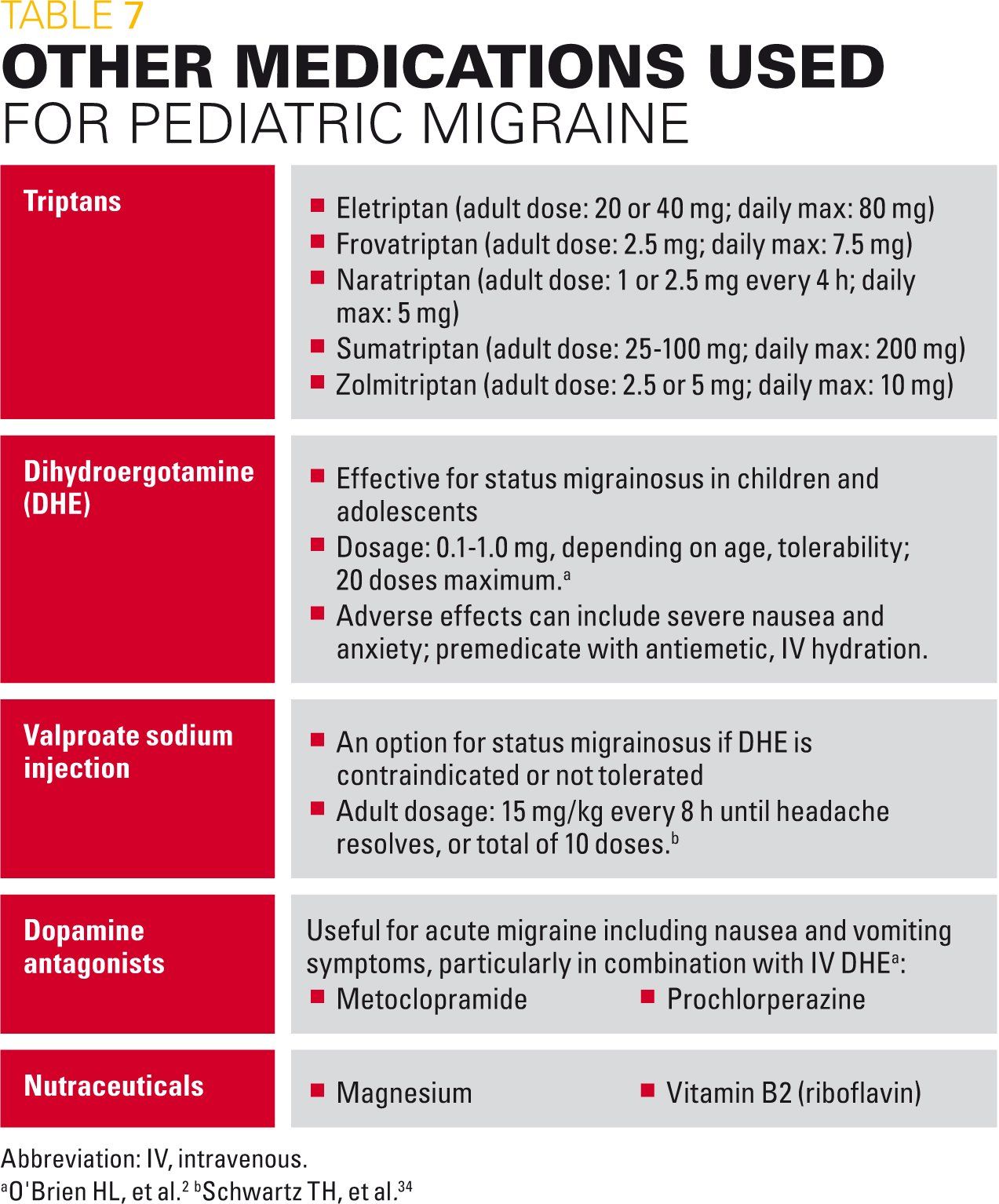
Table 8
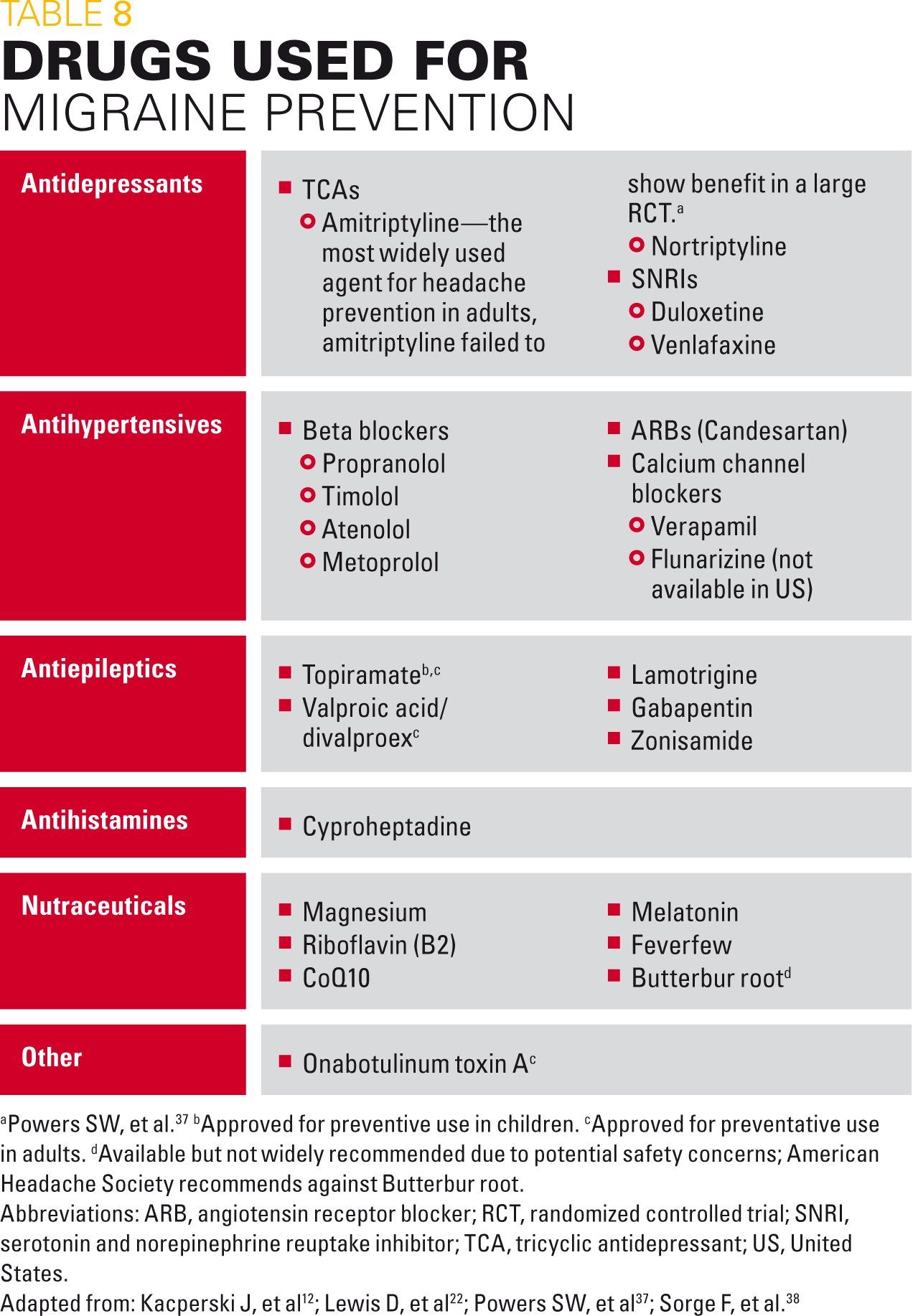
ICD-10 codes
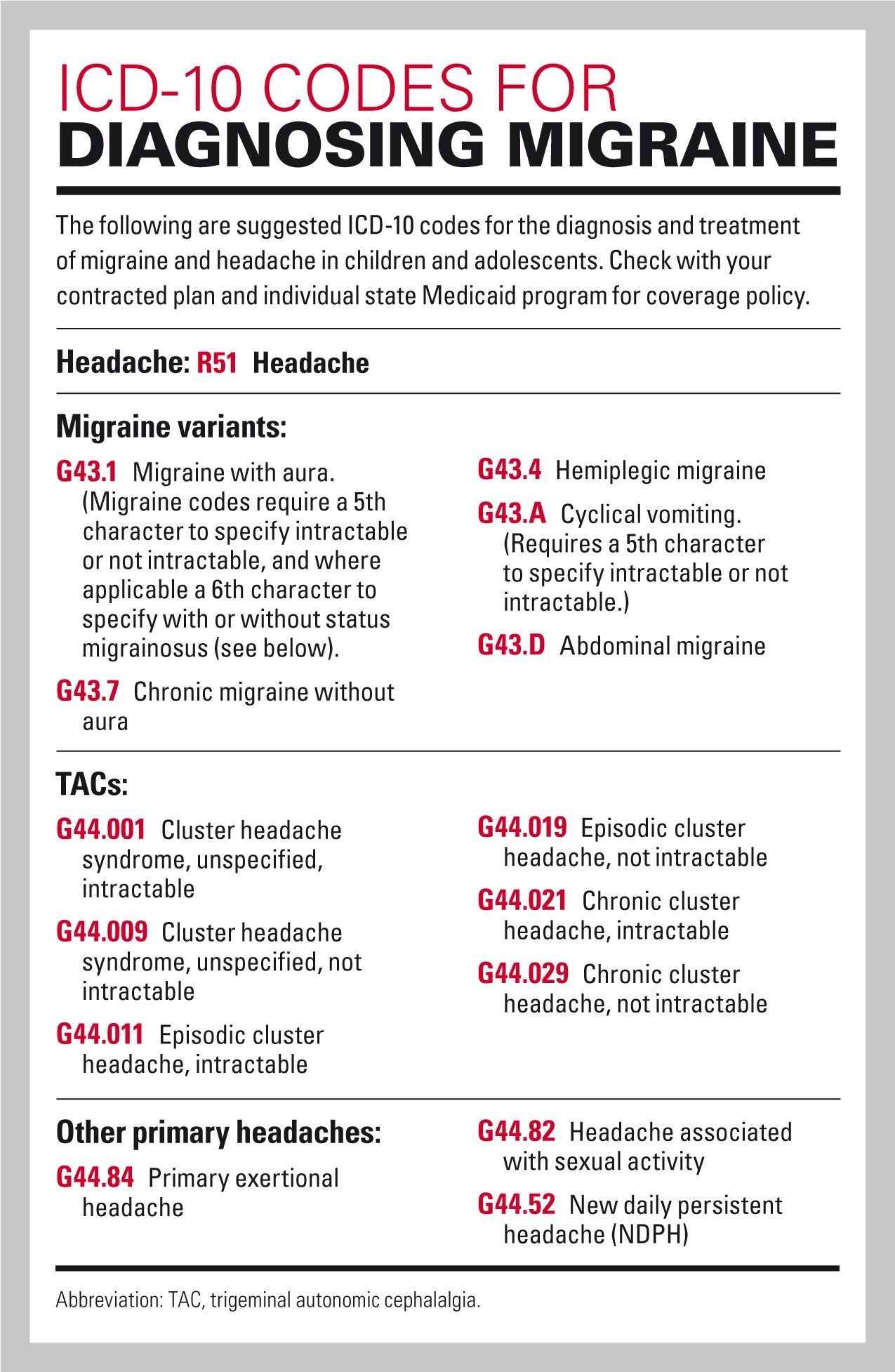
Medical writing support provided by John Jesitus, MA
A common complaint among children and adolescents, headaches including migraines remain the top reason for referrals to pediatric neurology.1,2 The worldwide prevalence of migraine in children and adolescents is 7.7%.3 Reported prevalence increases with age, from 3% (age 3 to 7 years) to 8% to 23% (age 11 to 15+ years).4 Approximately 10% of school-aged children suffer from migraine, with boys being more frequently affected before puberty, and girls more frequently thereafter.5 A comprehensive 2010 survey estimated that migraine has a global prevalence of 14.7%, making it the third-most-common disease in the world in men and women.6
All these headaches carry costs beyond their physical toll. On average, children with migraine miss 8 school days yearly, versus 4 for children without migraines.7 Among adults globally, migraine ranks seventh among specific causes of disability, and among the top 10 causes of disability in 14 of 21 world regions.8 One analysis reveals that between 2008 and 2013, patients with migraine had significantly higher direct and indirect healthcare costs ($10,363 and $11,294, respectively) than did patients without migraines ($4619 and $8945, respectively).9
Additionally, the migraine burden cannot be measured with dollars alone. Researchers have likened the impact of migraines on children's quality of life to that of arthritis, diabetes, and cancer.10,11
Yet the seriousness of migraine remains underappreciated by parents, teachers, primary care providers,12 and often migraine sufferers themselves, most of whom are never diagnosed or treated.5 The psychosocial and economic burden of pediatric migraine, coupled with the relief offered by newer treatments including triptans, lends urgency to accurately identifying and promptly treating migraine.2,12
Migraine classification
The considerable variability of migraine within and among patients stems from dysfunction of an ion channel in brainstem nuclei that normally modulates sensory input and regulates the meningeal blood vessels.13 Pathophysiologically, neural abnormalities drive dilation of cranial blood vessels, resulting in further nerve activation and pain.14
The International Classification of Headache Disorders, 3rd edition (ICHD-3), classifies headaches into primary, secondary, and those caused by cranial neuropathies and other headaches (Table 1).15
Primary headaches
This category includes diagnostic criteria for migraine and its variants, along with tension-type headache (TTH) and other trigeminal autonomic cephalalgias (TACs).
Migraines can occur with or without aura; specifically, at least 2 attacks that include 1 or more reversible visual, sensory, or other symptoms that meet specific temporal criteria.
Patients who have migraine without aura may experience prodromal symptoms up to 48 hours before other migraine symptoms. These symptoms may include:
· Fatigue
· Nausea
· Difficulty concentrating
· Stiffness
· Photophobia/phonophobia
· Blurred vision
· Yawning
· Pallor.
Additional types of primary headaches include TTH and TAC.
All forms of TTH typically involve a mild-to-moderate bilateral headache, pressing or tightening in quality. Increased pericranial tenderness is the most significant abnormal finding in patients with any type of TTH.15 Pain does not worsen with routine physical activity and may or may not be associated with nausea; phonophobia or photophobia may occur.
Finally, TACs are unilateral headaches, usually accompanied by prominent cranial parasympathetic autonomic features (such as conjunctival injection and/or lacrimation, nasal congestion, and facial sweating), which are lateralized and ipsilateral to the headache.15
Other primary headaches
Additional forms of primary headaches include the following (see ICHD-3 for descriptions and details15):
· Cough
· Exercise
· Sexual activity-associated
· Thunderclap
· Cold stimulus
· External-pressure
· Stabbing
· Nummular
· Hypnic
· New daily persistent headache (NDPH).
Secondary headaches
Secondary headaches include new headaches and preexisting or significantly worsening preexisting headaches caused by primary disorders such as trauma and systemic diseases.15 Other causes include:
· Trauma or injury to head and/or neck
· Cranial and/or cervical vascular disorder
· Nonvascular intracranial disorder
· Increased intracranial pressure
· Substance or its withdrawal
· Infection
· Disorder of homeostasis
· Psychiatric disorder
· Headache or facial pain attributed to disorder of the cranium, neck, eyes, ears, nose, sinuses, teeth, mouth, or other facial/cranial structure.
Cranial neuropathies, centrofacial pain, and other headaches include painful cranial-nerve lesions and other facial pains deriving from a complex catalog of causes such as trigeminal, glossopharyngeal, occipital, and other neuralgias; optic neuritis; ischemic oculomotor nerve palsy; and various facial neuropathies and syndromes.15
Evaluation
Evaluating pediatric migraine requires a systematic approach involving the following steps:16,17
1. Medical history-Usually, a thorough headache history provides enough clues for accurate diagnosis.18 Questions (Table 2) are structured to identify more concerning headache patterns early in the process.19
Keep in mind that there are red flags that should trigger consideration of neuroimaging for suspicion of intracranial pathology (see “Red flags for considering neuroimaging,” page XX).20
2. Physical examination-This portion of the evaluation should include the following measurements/investigations:
· Take vital signs (including blood pressure, temperature, signs of hypertension or infection).
· Measure head circumference, even in older children.
· Palpate head and neck for sinus, jaw, ocular or temporomandibular joint tenderness, thyromegaly, or nuchal rigidity.
· Identify trigger points or areas of maximum tenderness to help determine nature of the pain.
· Check skin for signs of neurocutaneous syndromes, particularly neurofibromatosis and tuberous sclerosis, which are highly associated with intracranial neoplasms.
3. Neurologic examination-More than 98% of children with brain tumors who present with headache have objective neurologic findings.21 Look for abnormalities in these areas during the basic neurologic exam:
· Optic discs
· Eye movements
· Pronator drift
· Gait (including tandem gait)
· Deep tendon reflexes.
Routine neuroimaging is not indicated in children with recurrent headaches and normal examination. However, physicians should consider neuroimaging if certain warning signs appear:
· Recent onset of severe headache
· Change in headache quality or frequency
· Abnormal neurologic examination
· Coexistence of seizures.
4. Ancillary testing as indicated-No evidence supports the use of routine laboratory studies, lumbar puncture, or electroencephalogram (EEG) in headache-afflicted children with normal physical and neurologic findings. However, if findings in steps 1 to 3 warrant further exploration, consider appropriate modalities.
5. Imaging as indicated-Similarly, no evidence supports the use of routine neuroimaging in children with a history of recurring headaches who have a normal neurologic exam. Neuroimaging in children with headaches should be considered when findings in steps 1 to 3 warrant further investigation.17 More specifically, when the neurologic exam is abnormal, when other simultaneous neurologic concerns such as seizures are present, or when headache historical factors such as first, worst, or marked change in headache pattern are reported, neuroimaging should be considered. When considering neuroimaging, magnetic resonance imaging (MRI) would be the preferred imaging modality unless there is a concern for an acute or life-threatening etiology that warrants quick imaging such as computed tomography (CT).
Treatment
Treatment of pediatric migraines requires a multitiered approach (Table 3), which tailors an individualized treatment plan to each patient's headache pattern and lifestyle and that can accommodate changes if needed.22 Headache frequency may spontaneously increase, for example, and patients may require higher or lower doses than for previous headaches, or, for more difficult headaches, combination therapy. Each child's degree of headache burden should determine how aggressively one treats and manages his or her headaches, considering the following factors:
· Headache frequency, duration and intensity;
· Patient's functional disability and pain tolerance;
· Patient's comorbidities; and
· Patient's quality of life.
Many patients with moderate-to-severe migraine respond well to oral treatment with analgesics and nonsteroidal anti-inflammatory drugs (NSAIDs) administered at the time of an attack (acute/abortive treatment; Table 4). Patients must be educated and able to use their medication as early during the headache as possible. This requires ready access to medications in school, home, and social situations:2,12,23 Patients also must avoid medication overuse, a known cause of headaches, by limiting analgesic and NSAID use to 2 to 3 days or less weekly. Keeping a headache diary can track drug use patterns.
Additional agents require caution. For example, aspirin-butalbital-caffeine is frequently prescribed for adult headaches, although, like other aspirin-containing products, it should be avoided in children aged younger than 16 years due to the risk of Reye syndrome.24 Always avoid opiates and other narcotics in children.
Triptans
Physicians typically reserve serotonin 5-HT1B/1D receptor agonists (triptans; Table 522,26-30) for moderate-to-severe headaches unresponsive to over-the-counter analgesic therapy.12 Unlike ergot derivatives, triptans offer selective activity, along with well-established dosing regimens, safety, and tolerability.25 Sumatriptan, almotriptan, zolmitriptan, and rizatriptan have earned US Food and Drug Administration (FDA) approval for acute pediatric migraine.
All triptans activate the atypical 5-HT1B/1D receptor that has been implicated in the pathophysiology of migraine, and, to a lesser degree, other 5-HT receptors.23 They do this through 3 main mechanisms of action:31
· Cranial vasoconstriction;
· Peripheral trigeminal inhibition; and
· Inhibition of transmission through second-order neurons of the trigeminal cervical complex.
In 2006, the FDA warned consumers that taking triptans with selective serotonin reuptake inhibitors (SSRIs) or selective serotonin/norepinephrine reuptake inhibitors (SNRIs) could raise users' risk of life-threatening serotonin syndrome. However, careful review of the available evidence has shown that this is not the case.32,33
Experts have suggested guidelines for triptan use in pediatric migraine (Table 6).2,12 Adverse effects of triptan generally last less than 30 minutes.
Additional treatment options
With few medications approved for pediatric migraine, physicians frequently prescribe drugs used for migraine in adults (Table 72,34).
Migraine prevention
Whereas no consensus exists for when and how to implement preventive therapy for migraine in children, various authors suggest considering prophylaxis in patients who experience at least 3 to 4 migraines monthly, and in those for whom acute treatments prove insufficient and/or poorly tolerated. Children who experience significant pain and/or disability also may warrant prophylaxis.12,35
Authors of the American Migraine Prevalence and Prevention (AMPP) trial recommend considering and offering prophylaxis to patients aged 12 years and older (Figure).36
The only agent the FDA has approved for preventive use in children is topiramate. Insufficient and often conflicting evidence notwithstanding, additional drugs commonly used for this purpose in children include antidepressives, antihypertensives, antiepileptics, antihistamines, and nutraceuticals (Table 812,22,37,38).
On the horizon: CGRP antagonists
A promising strategy for acute and preventive migraine treatment involves blocking calcitonin gene-related peptide (CGRP), a potent vasodilator whose concentration in the external jugular vein rises during migraine attacks39 and decreases in the serum after triptan administration and symptomatic relief.40 Developers of the following monoclonal antibodies targeting CGRP have filed for FDA review, with decisions expected in 2018:
· Erenumab
· Fremanezumab
· Galcanezumab.
Additional treatments under study specifically for pediatric headaches including migraine are propofol, prochlorperazine, dexamethasone, diclofenac, fentanyl, and several behavioral and nutraceutical approaches. As the array of interventions for preventing and treating pediatric migraine grows, timely and appropriate application of such agents will continue to reduce its burden.
References:
1. Stang P, Osterhaus JT. Impact of migraine in the United States: data from the National Health Interview Survey. Headache. 1993;33(1):29-35.
2. O'Brien HL, Kabbouche MA, Hershey AD. Treatment of acute migraine in the pediatric population. Curr Treat Options Neurol. 2010;12(3):178-185.
3. Abu-Arafeh I, Razak S, Sivaraman B, Graham C. Prevalence of headache and migraine in children and adolescents: a systematic review of population-based studies. Dev Med Child Neurol. 2010;52(12):1088-1097.
4. Stewart WF, Lipton RB, Celentano DD, Reed ML. Prevalence of migraine headache in the United States. Relation to age, income, race, and other sociodemographic factors. JAMA. 1992;267(1):64-69.
5. Migraine Research Foundation. Migraine in kids is not just a bad headache. Available at: http://migraineresearchfoundation.org/about-migraine/migraine-in-kids-and-teens/. Accessed May 15, 2018.
6. Vos T, Flaxman AD, Naghavi M, et al. Years lived with disability (YLDs) for 1160 sequelae of 289 diseases and injuries 1990-2010: a systematic analysis for the Global Burden of Disease Study 2010. Lancet. 2012;380(9859):2163-2196.
7. Migraines in children and teens. Migraine.com. Available at: https://migraine.com/migraines-in-children-and-teens/. Accessed May 15, 2018.
8. Steiner TJ, Stovner LJ, Birbeck GL. Migraine: the seventh disabler. J Headache Pain. 2013;14:1.
9. Bonafede MM, Sapra S, Shah N, Tepper SJ, Cappell KA, Desai PR. Incremental direct and indirect costs associated with migraine in the US. Poster PND28. Presented at: International Society for Pharmacoeconomics and Outcomes Research (ISPOR) 19th Annual International Meeting; May 31-June 4, 2014; Montréal, QC, Canada.
10. Powers SW, Patton SR, Hommel KA, Hershey AD. Quality of life in childhood migraines: clinical impact and comparison to other chronic illnesses. Pediatrics. 2003;112(1 pt 1):e1-e5.
11. Kernick D, Reinhold D, Campbell JL. Impact of headache on young people in a school population. Br J Gen Pract. 2009;59(566):678-681.
12. Kacperski J, Kabbouche MA, O'Brien HL, Weberding JL. The optimal management of headaches in children and adolescents. Ther Adv Neurol Disord. 2016;9(1):53-68.
13. Goadsby PJ. Pathophysiology of headache. In: Silberstein SD, Lipton RB, Dalessio DJ, eds. Wolff's Headache and Other Head Pain. 7th ed. Oxford, England: Oxford University Press; 2001:57-72.
14. May A, Goadsby PJ. The trigeminovascular system in humans: pathophysiologic implications for primary headache syndromes of the neural influences on the cerebral circulation. J Cereb Blood Flow Metab. 1999;19(2):115-127.
15. Olesen J; Headache Classification Committee of the International Headache Society (HIS). The International Classification of Headache Disorders, 3rd ed. Cephalalgia. 2018;38(1):1-211. Available at: https://www.ichd-3.org/1-migraine/. Accessed May 15, 2018.
16. Brenner M, Oakley C, Lewis D. The evaluation of children and adolescents with headache. Curr Pain Headache Rep. 2008;12(5):361-6.
17. Lewis DW, Ashwal S, Dahl BS, et al; Quality Standards Subcommittee of the American Academy of Neurology; Practice Committee of the Child Neurology Society. Practice parameter: evaluation of children and adolescents with recurrent headaches: report of the Quality Standards Subcommittee of the American Academy of Neurology and the Practice Committee of the Child Neurology Society. Neurology. 2002;59(4):490-498.
18. Hershey AD. Current approaches to the diagnosis and management of paediatric migraine. Lancet Neurol. 2010;9(2):190-204.
19. Rothner AD. The evaluation of headaches in children and adolescents. Semin Pediatr Neurol. 1995;2(2):109-118.
20. Honig PJ, Charney EB. Children with brain tumor headaches. Distinguishing features. Am J Dis Child. 1982;136(2):121-124.
21. The epidemiology of headache among children with brain tumor. Headache in children with brain tumors. The Childhood Brain Tumor Consortium. J Neurooncol. 1991;10(1):31-46.
22. Lewis D, Ashwal S, Hershey A, et al; American Academy of Neurology Quality Standards Subcommittee; Practice Committee of the Child Neurology Society. Practice parameter: pharmacological treatment of migraine headache in children and adolescents: report of the American Academy of Neurology Quality Standards Subcommittee and the Practice Committee of the Child Neurology Society. Neurology. 2004;63(12):2215-2224.
23. Goadsby, PJ, Lipton RB, Ferrari MD. Migraine-current understanding and treatment. N Engl J Med. 2002;346(4):257-270.
24. Pugliese A, Beltramo T, Torre D. Reye’s and Reye' s-like syndromes. Cell Biochem Funct. 2008;26(7):741-746.
25. Olesen J, Tfelt-Hansen P, Welch KM. The Headaches. 2nd ed. Philadelphia: Lippincott Williams and Wilkins; 2000.
26. Pernix Ireland LImited. Treximet (sumatriptan, naproxen sodium)-Highlights of prescribing information. Available at: https://www.accessdata.fda.gov/drugsatfda_docs/label/2015/021926s011s012lbl.pdf. Revised May 2015. Accessed May 15, 2018.
27. Winner P, Rothner AD, Saper J, et al. A randomized, double-blind, placebo-controlled study of sumatriptan nasal spray in the treatment of acute migraine in adolescents. Pediatrics. 2000;106(5):989-997.
28. Merck and Co. Inc. Maxalt (rizatriptan benzoate)-Highlights of prescribing information. https://www.merck.com/product/usa/pi_circulars/m/maxalt/maxalt_pi.pdf. Revised March 2015. Accessed May 15, 2018.
29. Janssen Pharmaceuticals. Axert (almotriptan malate)-Highlights of prescribing information. http://www.janssenlabels.com/package-insert/product-monograph/prescribing-information/AXERT-pi.pdf. Revised May 2017. Accessed May 15, 2018.
30. Impax/AstraZeneca. Zomig (zolmitriptan)-Highlights of prescribing information. https://www.accessdata.fda.gov/drugsatfda_docs/label/2015/021450s008lbl.pdf. Revised June 2015. Accessed May 15, 2018.
31. Goadsby PJ. The pharmacology of headache. Prog Neurobiol. 2000;62(5):509-525.
32. Evans RW, Tepper SJ, Shapiro RE, Sun-Edelstein C, Tietjen GE. The FDA alert on serotonin syndrome with use of triptans combined with selective serotonin reuptake inhibitors or selective serotonin-norepinephrine reuptake inhibitors: American Headache Society position paper. Headache. 2010;50(6):1089-1099.
33. Orlova Y, Rizzoli P, Loder E. Association of coprescription of triptan antimigraine drugs and selective serotonin reuptake inhibitor or selective norepinephrine reuptake inhibitor antidepressants with serotonin syndrome. JAMA Neurol. February 26, 2018. Epub ahead of print.
34. Schwartz TH, Karpitskiy VV, Sohn RS. Intravenous valproate sodium in the treatment of daily headache. Headache. 2002;42(6):519-522.
35. Freitag FG, Schloemer F, Shumate D. Recent developments in the treatment of migraine in children and adolescents. Headache Pain Manag Case Rep. 2016;1:1.
36. Lipton RB, Bigal ME, Diamond M, et al; AMPP Advisory Group. Migraine prevalence, disease burden, and the need for preventive therapy. Neurology. 2007;68(5):343-349.
37. Powers SW, Coffey CS, Chamberlin LA, et al; CHAMP Investigators. Trial of amitriptyline, topiramate, and placebo for pediatric migraine. N Engl J Med. 2017;376(2):115-124.
38. Sorge F, De Simone R, Marano E, Nolano M, Orefice G, Carrieri P. Flunarizine in prophylaxis of childhood migraine. A double-blind, placebo-controlled, crossover study. Cephalalgia. 1988;8(1):1-6.
39. Goadsby PJ, Edvinsson L, Ekman R. Vasoactive peptide release in the extracerebral circulation of humans during migraine headache. Ann Neurol. 1990;28(2):183-187.
40. Juhasz G, Zsombok T, Jakab B, Nemeth J, Szsolcsanyi J, Bagdy G. Sumatriptan causes parallel decrease in plasma calcitonin gene-related peptide (CGRP) concentration and migraine headache during nitroglycerin induced migraine attack. Cephalalgia. 2005;25(3):179-183.
